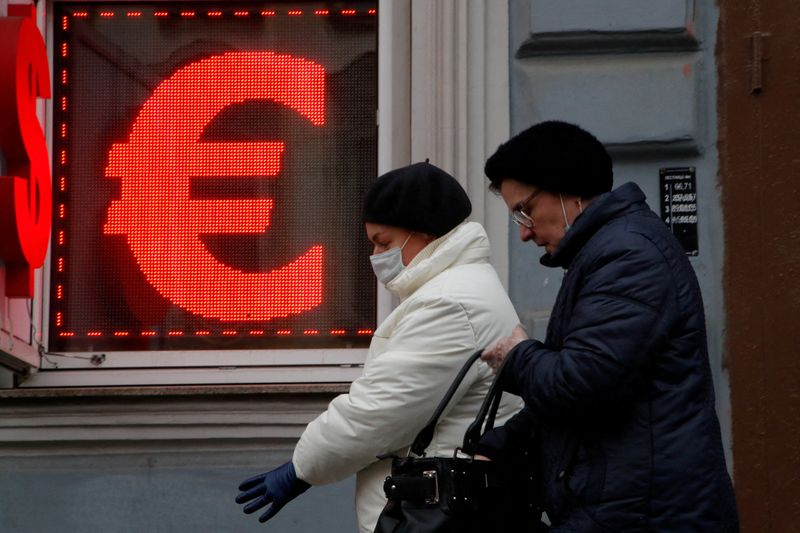 © Reuters. FILE PHOTO: Women walk past a board showing the U.S. dollar and euro signs in a street in Saint Petersburg, Russia February 25, 2022. REUTERS/Anton Vaganov
© Reuters. FILE PHOTO: Women walk past a board showing the U.S. dollar and euro signs in a street in Saint Petersburg, Russia February 25, 2022. REUTERS/Anton Vaganov
By John McCrank
NEW YORK (Reuters) - The euro retreated from its overnight gains on Thursday following the European Central Bank's announcement it will phase out its stimulus in the third quarter, while the dollar strengthened after a strong U.S. inflation report.
The statement from the ECB, which left the door open to an interest rate hike before the end of 2022 as soaring inflation outweighs concerns about the fallout from Russia's invasion of Ukraine, briefly sent the euro higher, before market sentiment turned negative.
"The euro got a double whammy, from what is still a relatively dovish ECB - lower growth obviously - and with the higher inflation the market is really starting to price in a rate differential between the dollar and the euro," said Boris Schlossberg, managing director of FX strategy at BK Asset Management.
The ECB is trailing other major central banks such as the U.S. Federal Reserve and the Bank of England in the post-pandemic tightening cycle, which has also weighed on the single currency.
The euro touched a 22-month low of $1.0804 earlier in the week, with investors expecting the crisis in Ukraine to have a sizeable impact on European growth. The single currency is widely seen as a gauge of Europe's biggest security crisis since 1945.
Recent speculation that EU leaders were considering joint bond issuance to finance energy and defense spending have, however, given the euro some support. EU leaders were meeting on Thursday in Versailles, west of Paris.
At 3 p.m. Eastern time, the euro was down 0.83% at $1.0985, after having jumped 1.6% on Wednesday, its best day in nearly six years.
The Fed is expected to raise rates by at least 25 basis points when it meets next week.
"Our base case scenario is still for the Fed to be the most hawkish central bank in the developed world and that should support the dollar at the margin," said Bipan Rai, North American head of FX strategy at CIBC Capital Markets.
The dollar index was up 0.547% at 98.506, after falling 1.17% on Wednesday.
Data on Thursday showed that U.S. consumer prices surged 7.9% year-over-year in February, culminating in the largest annual increase in 40 years.
Inflation is poised to accelerate further in the months ahead as Russia's war against Ukraine drives up the costs of crude oil and other commodities.
Commodity-linked currencies, such as the Australian dollar, the New Zealand dollar, and the Canadian dollar, were up on the day, with the Aussie up 0.58%, the Kiwi up 0.49%, and the loonie up 0.37%.
Bitcoin tumbled nearly 6.02% to $39,434, erasing most of its gains from the previous day when an executive order from U.S. President Joe Biden requiring the government to prepare reports on the future of money calmed market fears about an immediate regulatory crackdown on cryptocurrencies.

